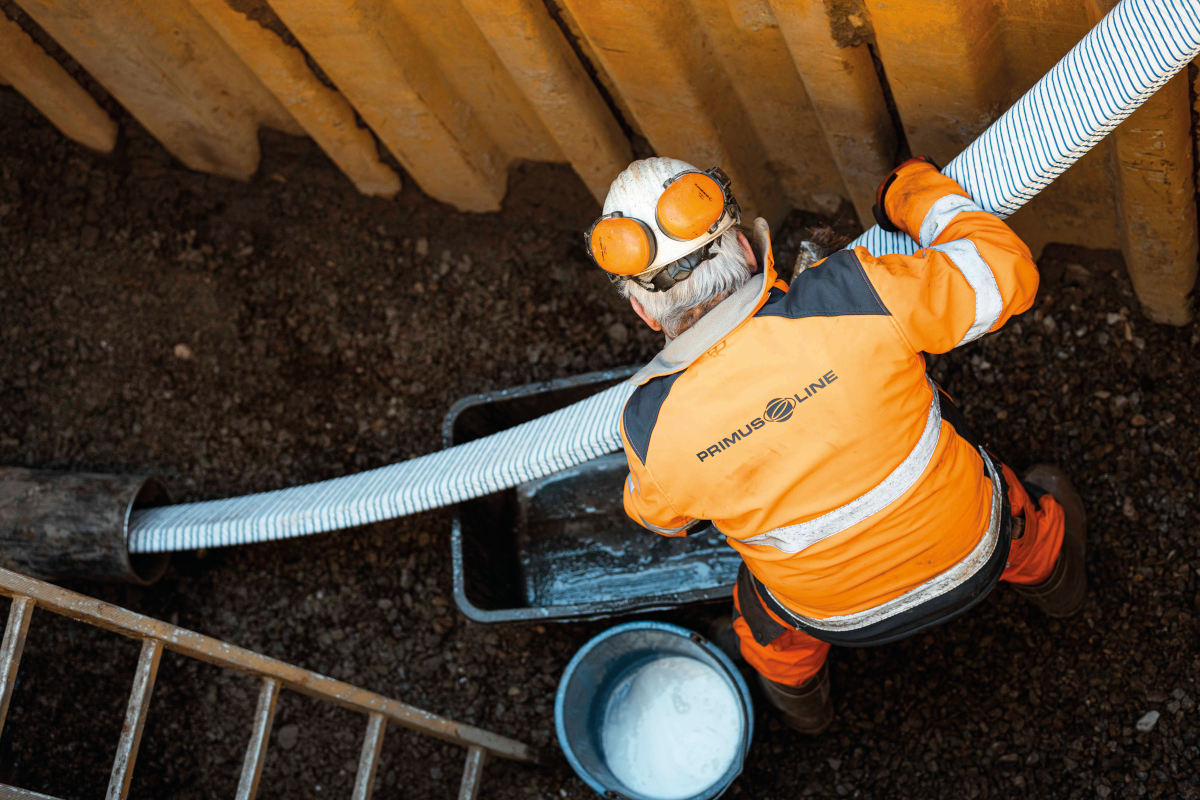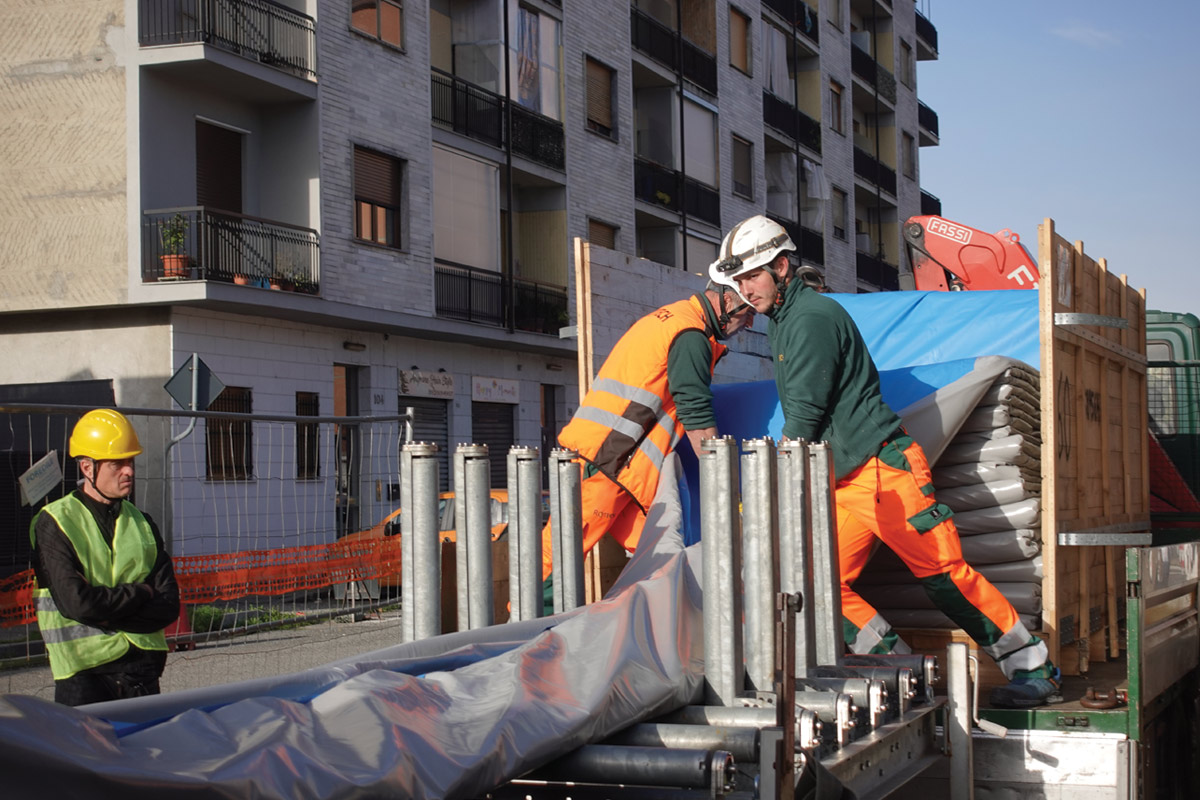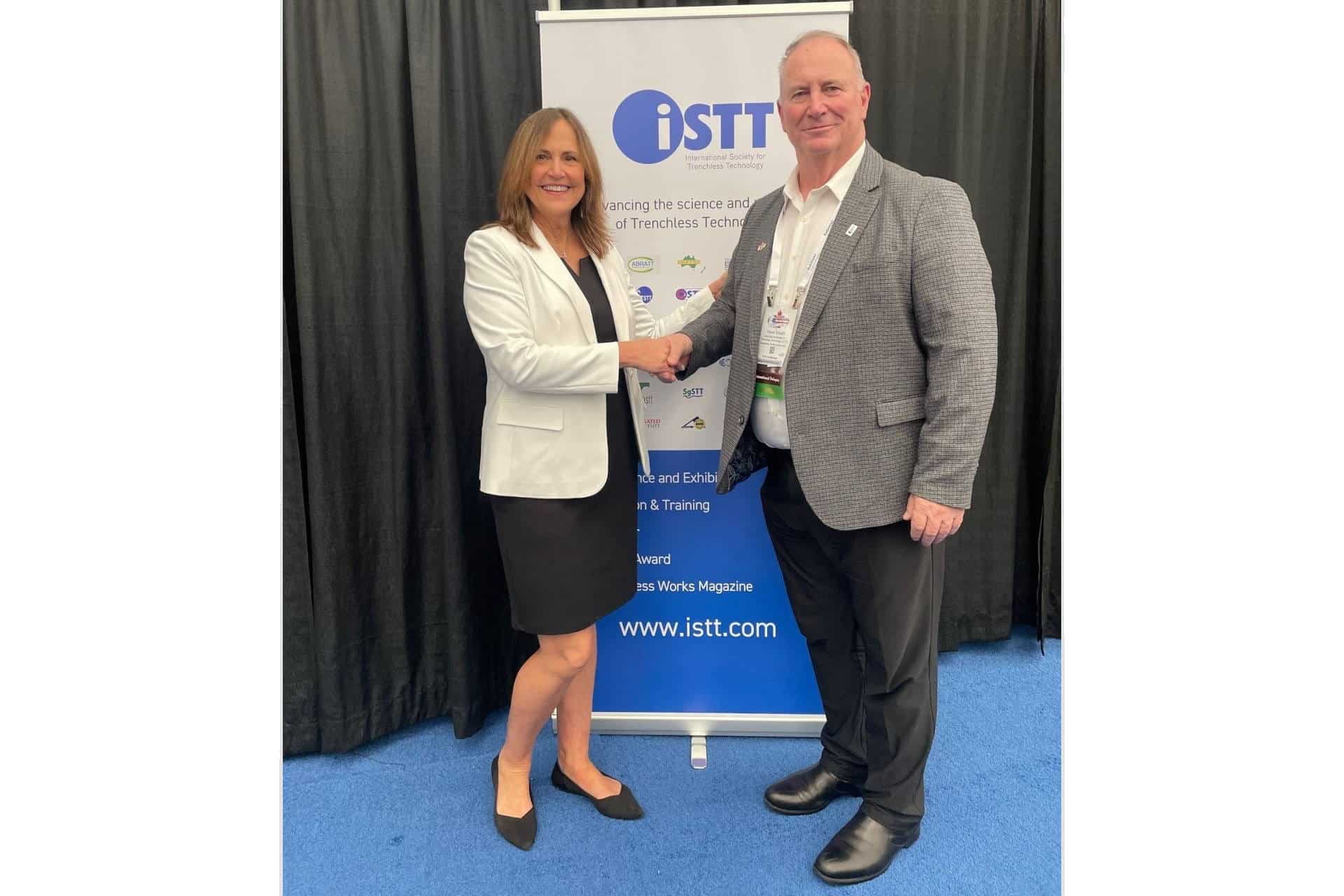Swage Lining with Static Bursting Equipment in Berlin
 Contractor Ludwig Pfeiffer Hoch- und Tiefbau GmbH & Co. KG was recentlycontracted by the Berlin Waterworks, Berlin, Germany, to rehabilitate a sanitarysewer pressure pipe in the City of Berlin, using the swage line method. The goalof the project was to renew the ND 1,000-mm steel sanitary sewer pressure pipe(a total length of approximately 600 m) in order to accommodate higher pressurelevels.
Contractor Ludwig Pfeiffer Hoch- und Tiefbau GmbH & Co. KG was recentlycontracted by the Berlin Waterworks, Berlin, Germany, to rehabilitate a sanitarysewer pressure pipe in the City of Berlin, using the swage line method. The goalof the project was to renew the ND 1,000-mm steel sanitary sewer pressure pipe(a total length of approximately 600 m) in order to accommodate higher pressurelevels.
The host pipe ran under a street in a residential area. Numerous restaurantsand shops are located in the neighborhood, so an open-trench method would havebeen extremely disruptive. In order to avoid the disruption and wide rangeclosures, the Berlin Waterworks intended to pull in a PE liner in two sectionsinto the old pipe without any annular space using the cold swage lineapplication. This process is in accordance with the local waterregulations.
The Pfeiffer Co. often uses the cold swage line method for projects likethis. During this process, a PE-Inliner is pulled into the old pipe within thediameter of the existing host pipe without the use of any heat and in a reducedsize. This way, the pipes from ND 100 mm up to ND 1,200 mm, with installationlengths of up to 1,000 m, can be restored utilizing this method.
The Pfeiffer Co. has a good deal of experience with static pipe bursting,specifically with the Grundoburst static pipe bursting system from trenchlessequipment manufacturer TT Technologies, Aurora, Ill., (a subsidiary ofTracto-Technik, Lennestadt, Germany). According to TT Technologies productspecialist Collins Orton, while the Grundoburst unit is designed for static pipebursting, it is also effective for other trenchless applications.
“Static bursting systems can be used for these types of applications. Inessence, the processes are very similar. In a swage line or even a sliplinesituation, however, there is no need to burst the host pipe,” Orton said. “Buteach method does require the pulling in of a new product pipe and that’s wherethe similarities lie. And that’s why static bursting units can be used in allthree scenarios.”
At the jobsite in Berlin, the Pfeiffer Co. used the largest static pipebursting unit available, a Grundoburst 2500G.
Static Bursting & Swage Lining
During a typical static bursting process, a hydraulically powered burstingunit pulls specially designed bladed rollers through an existing line. As thebladed rollers are pulled through, they split the host pipe. An expanderattached to the rollers forces the fragmented pipe into the surrounding soilwhile simultaneously pulling in the new pipe. For the swage line project inBerlin, the hydraulic bursting unit would be used to pull the swaged pipe intoplace. A large bursting unit would be needed.
“In this particular case, the contractor chose to use the bursting unitinstead of a winch because of the space limitations of the project,” Orton said.“The Grundoburst 2500G provides up to 2,550 kN of pullback, enough to meet therequirements of the cold swage line method and still take up less space than acomparable winch system. Looking at it logistically, it is easier to move thebursting machine than a comparable winch.”
On the Job
The construction work in Berlin was divided into two sections. Crews dug alaunch pit near the middle of the run, creating a run of 322 m in one directionand a run of 216 m in the other. After a high-pressure cleaning process of theexisting pipe, where all loose particles are removed, a camera inspection wasperformed. Buildup within the pipe was removed mechanically with a scratchingtool. For swage lining, a metallic smooth surface is not necessary, but anypossible obstacles within the old pipe should be removed.
During the swage lining process, the oversized pipe is reduced in diameter toabout 10 percent less than the inside diameter of the host pipe. The swaged downpipe is pulled into the host pipe and allowed to return to its originaldiameter. Because the pipe cannot actually reach its original diameter, itbecomes tight against the wall of the host pipe. In this case, the new pipe was3 percent bigger. As soon as the pulling force is relieved, the pipe tries toreturn to its original diameter again. But the inner diameter of the existingpipe limits it.
According to Orton, as crews fused together the necessary lengths of HDPE,the inner and the outer welding beads were removed from the pipe. “The exteriorand interior weld beads are removed to allow the PE pipe to pass through thereduction die without getting stuck,” Orton said. “Removal of the exterior beadis done with a special skiving knife that removes the bead in a matter ofseconds. The internal bead is removed with a tool similar to the bead trimmercommonly found in the United States. This tool reaches back into the pipe justafter the fusion weld is cooled and deploys a cutter and spacing gauge that thenare rotated from the end of the pipe. The rotation carves the bead off. Thisprocedure takes a few minutes per joint.”
A pulling head was welded to the front and first section of pipe to beinstalled. Crews positioned the Grundoburst in the launch pit and rodded thefirst section of pipe with the Quicklock bursting rods. Once at the launch pit,the connection was made between the Quicklock rods and the product pipe. Onceestablished, crews began the swage lining process. The static bursting unitpulled the HDPE through the reduction tool and the swage lining die, in order toreduce the pipe’s diameter. Crews monitored the pulling force constantly to makesure it stayed within the permissible limits for the PE pipe. To keep thefriction losses as low as possible, environmental-friendly, anti-seize fluidswere applied. The pipe then continued on into the host pipe until fullyinstalled.
Once the first section was in place, the bursting unit was rotated 180degrees and crews set to work on the next section, utilizing the same launchpit.
“A strong, steady pulling force is exerted to pull the entire length of pipeto be replaced through a reducing die setup. The die is tapered and will acceptthe outside diameter of the new PE pipe. It then continues through a funnelshaped die that continues to reduce the diameter of the PE pipe to apredetermined diameter, approximately 10 percent smaller than the I.D. of thehost pipe,” Orton said. “The process can be interrupted at any time, for exampleto butt-weld pre-fabricated pipe lengths together. The deformation andinstallation speed with this dimension is between 50 and 100 m per hour,therefore pipe lengths from 300- to 600-m lengths can be pulled in, without anyproblem, in one day’s work.”
For the project in Berlin, HDPE 100 with dimensions 1,030 mm x 60.6 (SDR 17,PN 10) was chosen. Due to the large diameter, which in a typical swage line isgenerally about 3 percent greater than the host pipe, a 100 percent tight anddurable fit of the PE liner inside the old pipe was created.
After both pipe sections were successfully pulled in, pre-welded sockets withflanges were welded to each end of each pipe length to complete theinstallation. After assembly of the end flange, a pressure check was carriedout, as well as a final camera inspection.
The new PE liner has the quality of a new pipe after the installation and cancarry all loads from the ground and traffic, as well as the internal pressure,without effects by the old pipe. Due to the very good hydraulic characteristicsof the HDPE pipe further flow reduction is not expected.
Jim Schill is a technical writer in Mankato, Minn.




